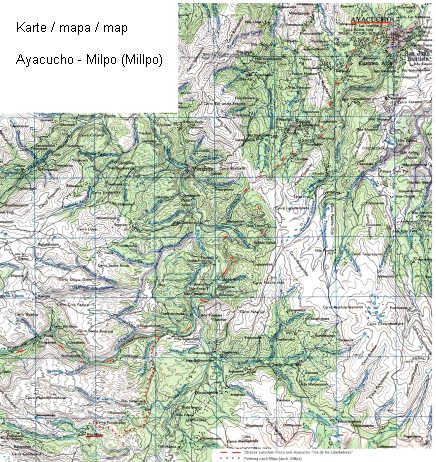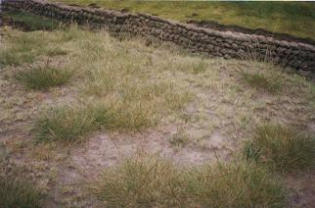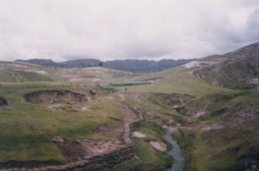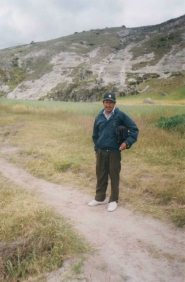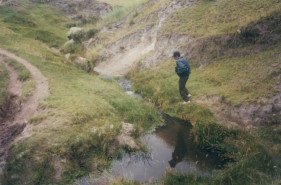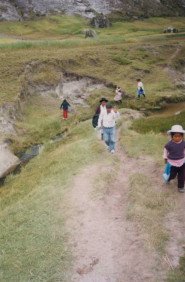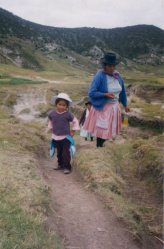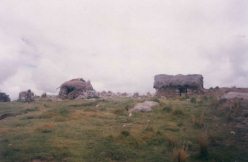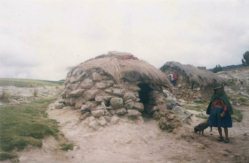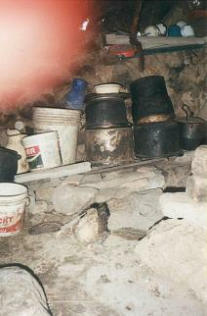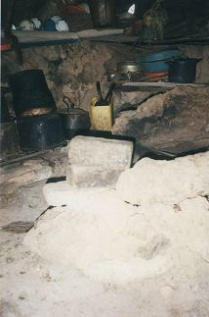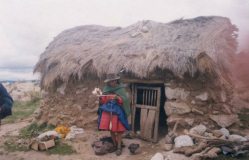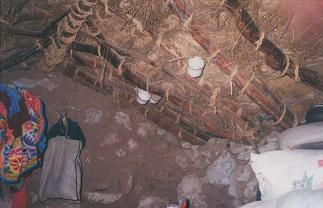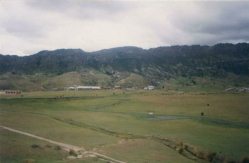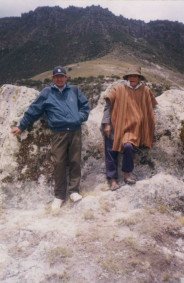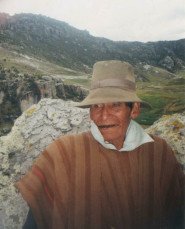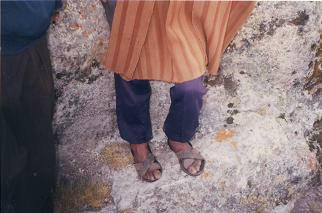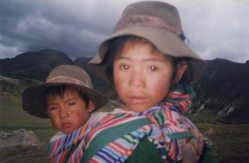|
Photos of landscape
|
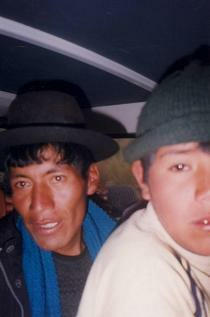 |
 Indígenas
in
the combi, closeup Indígenas
in
the combi, closeup
The combi is "stuffed" again. The indígenas have a
sorrowful expression in their face, and it's not
possible to take a photo from everybody.
|
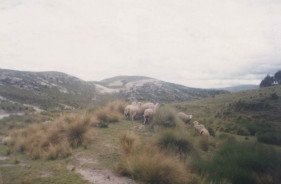 |
 Flock
of
sheep Flock
of
sheep
|
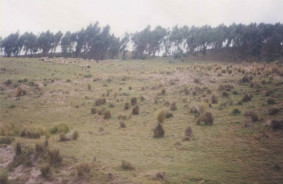 |
 Meadow
with
little forest in the background Meadow
with
little forest in the background
|
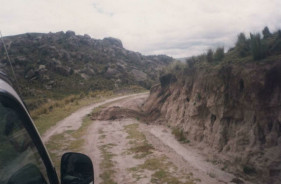 |
 Miserable
road
conditions and heavy erosion on the slope of the road Miserable
road
conditions and heavy erosion on the slope of the road
The indígenas have no money for road fortifications.
The slopes are not saved. By this the rainwater is
eroding the earth and this is the result, bizarre
erosion pictures. So, break-offs of the slopes are
regularly.
|
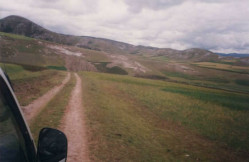 |
 Country
road
with fields and panorama Country
road
with fields and panorama
For nature lovers the landscape is a paradise when
there was no cold.
|
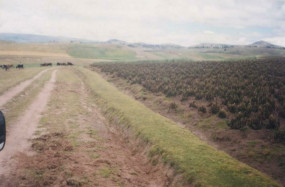 |
 Country
road
with primitive ditch Country
road
with primitive ditch
The ditches are
primitive without any stony pavement or cement. In
the background a cattle herd can be seen blocking
our way.
|
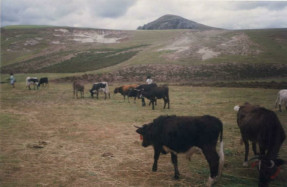 |
 Cattle
herd
01 Cattle
herd
01
|
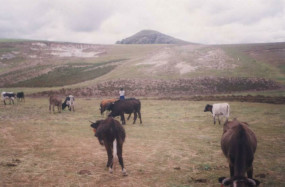 |
 Cattle
herd
02 Cattle
herd
02 |
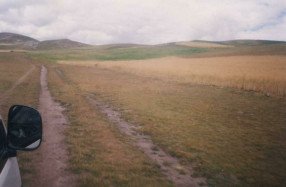 |
 Country
road,
ditch, corn field and panorama Country
road,
ditch, corn field and panorama |
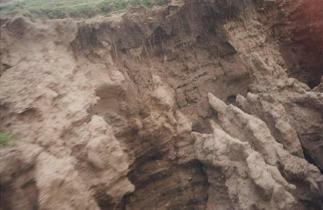 |
 Slope
of
the country road with heavy erosion, closeup Slope
of
the country road with heavy erosion, closeup
|
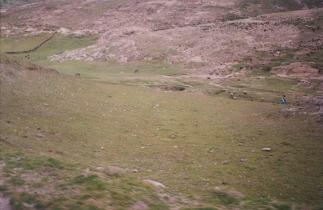 |
 Stony
pasture,
an indígena with cattle Stony
pasture,
an indígena with cattle
|
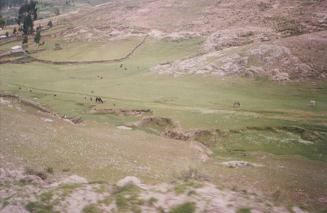 |
 Pasture
with
cattle and field walls Pasture
with
cattle and field walls |
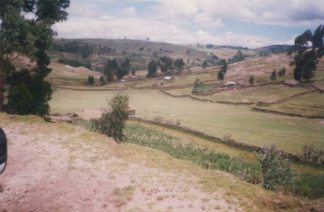 |
 Field
walls Field
walls
In general the field walls are also a shelter for
little animals.
|
|
|
 |
 Pasture
and
field walls of stone Pasture
and
field walls of stone
|
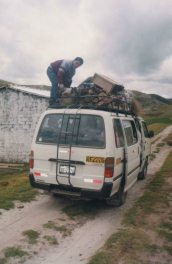 |
 Combi
with
a living pig on the roof Combi
with
a living pig on the roof
On a hamlet on the way there is a pig brought onto the
roof. The indígenas have no fear to fix a living pig
and to transport it on the roof of the car. Animal
protection does not exist, as there is no human
protection in Peru, too, because human protection is
only for the rich.
|
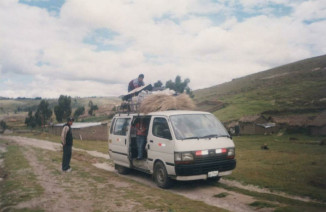 |
 Overcrowded
combi,
front view Overcrowded
combi,
front view
The police lets pass
the overcrowded combis. The police knows about the
conditions and has no other choice. For a traffic
with European standards all road conditions would
have to be improved first. But the state is nor
ready for anything what concerns the indígenas...
|
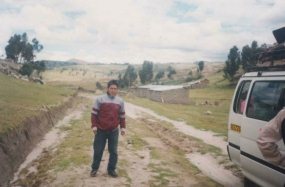 |
 The
indígena,
and a hamlet in the background The
indígena,
and a hamlet in the background
|
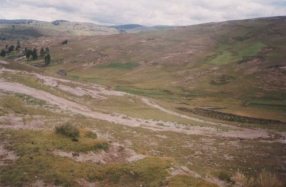 |
 Steep
country
road 01 Steep
country
road 01
Some parts of the
country road are this steep that a part of the
people has to leave the combi so the combi can pass
the steep passage, because this Japanese combi has
got only a two wheel drive.
|
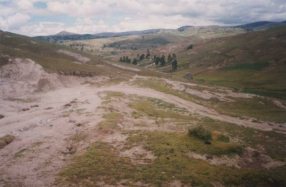 |
 Steep
country
road 02, miserable road conditions Steep
country
road 02, miserable road conditions |
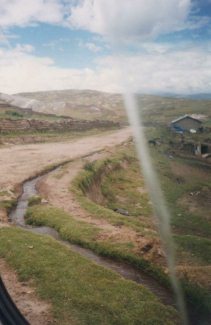 |
 Ditch
in
natural meanders Ditch
in
natural meanders
The landscape would
be a paradise for nature lovers when there was no
cold...
|
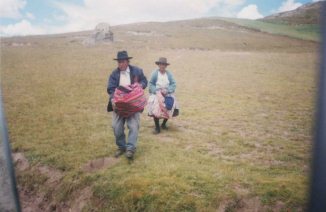 |
 Two
more
indigenas Two
more
indigenas
The combi is not full enough yet. From now on I only
have a "standing room".
|
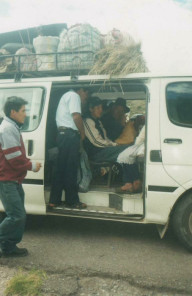 |
 Full
combi,
side entrance Full
combi,
side entrance
|
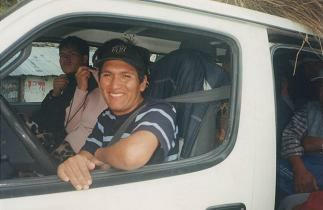 |
 The
combi's
driver The
combi's
driver
His driving work
with an overcrowded combi on the miserable country
road is worth more than an appraisal.
|
|
|
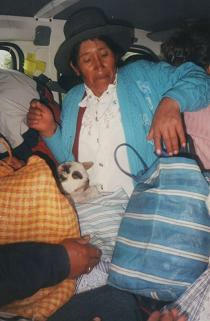 |
 Indígena
grandmother
with a lamb on her lap Indígena
grandmother
with a lamb on her lap
The indígenas have a very personal relationship to
animals. The lamb on the lap of the grandmother is no
single case.
The mothers with babies also suckle their babies in
the bus. Soothers don't exist. In whole Peru I never
have seen any soother. The soother is the mother's
breast itself. This is nature and soothers are not the
nature...
|
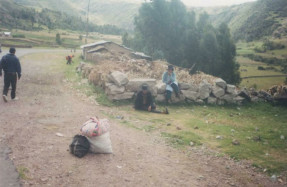 |
 On
the Via Libertadores, indígenas waiting for a bus On
the Via Libertadores, indígenas waiting for a bus
After we reached the big road "Via Libertadores"
between Pisco and Ayacucho Ciriaco and I left the
combi to wait for a bigger bus. We walk back a little
where is a restaurant for lunch. Indígenas are sitting
there and waiting for a bus, too. Their luggage is
traditionally in rags on the earth. the indígenas pack
all things into rags which can be taken on the back.
Suitcases do not exist.
|
 |
 On
Via Libertadores, a poster says there is a development
project for agriculture On
Via Libertadores, a poster says there is a development
project for agriculture
When I ask the woman if the project is also realized
she says that there hasn't been done anything since
the poster is fixed there. The Peruvian government
often announces projects which are not realized then
to make jokes with the population...
|
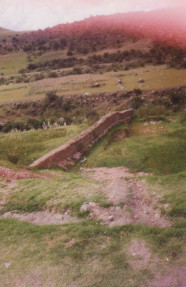 |
 On
Via Libertadores, wall of clay On
Via Libertadores, wall of clay
There is always the question how long the clay walls
will resist to the rain.
|
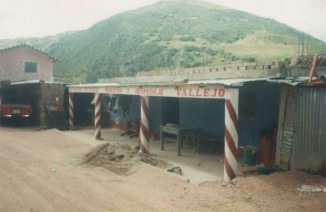 |
 On
Via Libertadores, Hostal / Hospedaje (hospice) Vallejo On
Via Libertadores, Hostal / Hospedaje (hospice) Vallejo
This little
restaurant on the Via de los Libertadores is a
traditional place to go for a slash to urinate and
to buy provisions. The toilets are only wholes and
nothing more. The rooms often have no window.
|
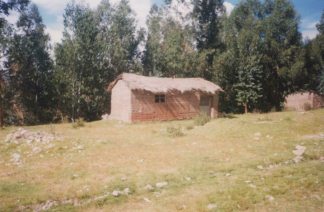 |
 On
Via Libertadores, indígena clay house On
Via Libertadores, indígena clay house
|
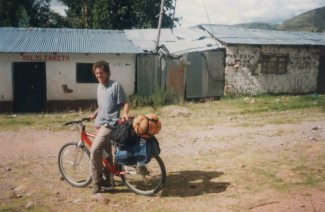 |
 On
Via Libertadores, French cyclist, metal huts in the
background On
Via Libertadores, French cyclist, metal huts in the
background
The French cyclist indicated he had been 6 days on
tour with his bike from Lima to Ayacucho and now would
look for a calm hospice.
The huts with corrugated sheets in the background
don't seem to be very airtight. But on the Road "Vía
de los Libertadores" it's not that cold any more.
|
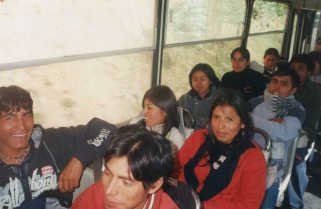 |
 On
Via Libertadores, student's bus 01, Peruvian women On
Via Libertadores, student's bus 01, Peruvian women
After lunch Ciriaco and I were taken by a student's
bus. The students had on their jackets because some of
the window panes were broken and not repaired. One can
call this also "automatic air condition".
The students were from the faculty for agriculture of
the university of Ayacucho. They told they had been in
the Sierra to look at special stone formations.
Speaking about the problems in the Sierra they at once
said that the training program at the university is
not at all speaking about the problems of the country.
|
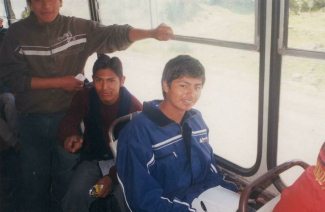 |
 On
Via Libertadores, student's bus 02, Peruvian men On
Via Libertadores, student's bus 02, Peruvian men
I said to the students that in Peru a good whole-grain
bread made of spelt or amaranth is missing, that the
nutrition in the Sierra has to be another one that in
the planes of desert on the sea or in the virgin
forest, that there is missing a good chocolate and
honey. They agreed in all points, as well the leader.
But if the indications are given up to the department
of agriculture and to the department of economy is not
ensured.
|





